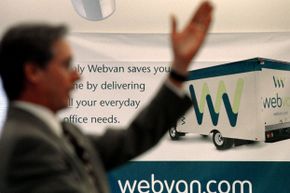The tech industry seems to have a penchant for generating businesses that rise incredibly fast and then crash and burn spectacularly.In the late 1990s, there was an economic bubble that saw billions of dollars in venture capital poured into technology companies (mainly dot-coms) in a sort of frenzy to latch on to the next big thing. Many of these start-ups went public and received even more investment money. More attention was paid to hype than to solid business plans. Stocks soared to incredible (and inflated) heights and everyone involved expected to become a millionaire. In some cases, early investors cashed out and pocketed some sweet coin.
But in March 2000, when the tech bubble burst, those who didn't get out early enough were left with nothing but shattered dreams. A lot of the company busts followed a pattern: The fledgling business received hundreds of millions through venture capital and initial public offerings (IPOs), blew through most of it via rampant spending and rapid expansion, ran out of cash reserves when revenues didn't reach expected levels, failed to get additional funding because of market conditions and went bankrupt within just a year or two of launching.
Advertisement
The following are stories of 10 tech financial implosions. Most were felled by the dot-com bust, directly or indirectly, although some were done in by unwise acquisitions, lawsuits or nefarious doings. We can credit these early entrepreneurs for laying the groundwork for our modern wired 24/7 lives, and also for providing some valuable lessons on how not to run a tech company, but that's probably little consolation to those who were ruined in the wake of disaster.










